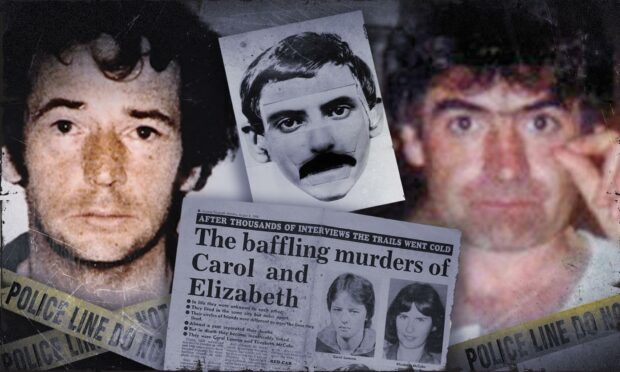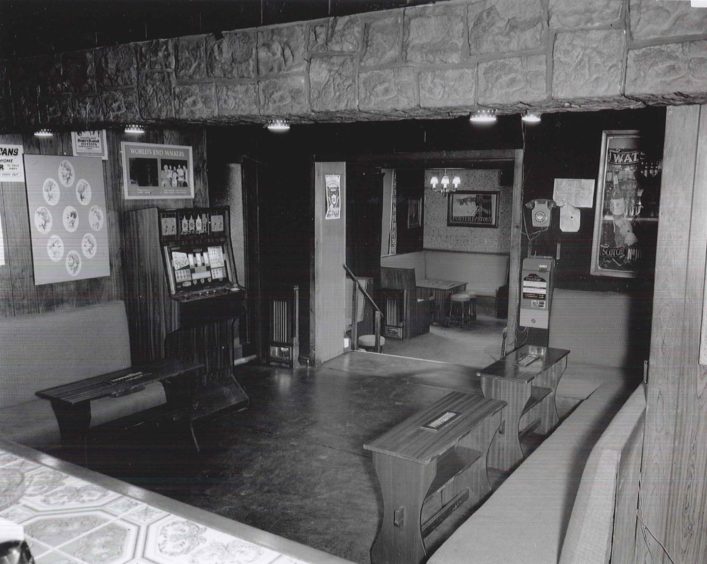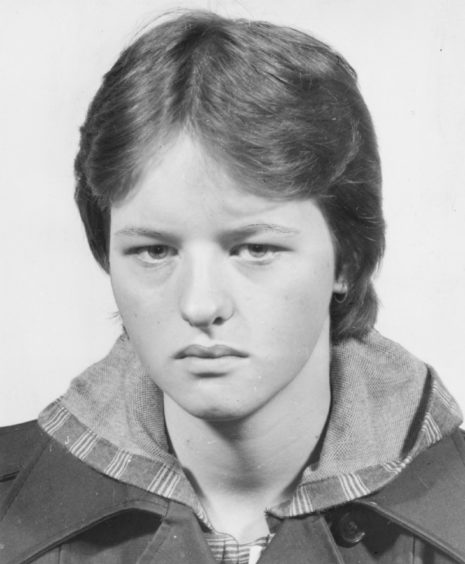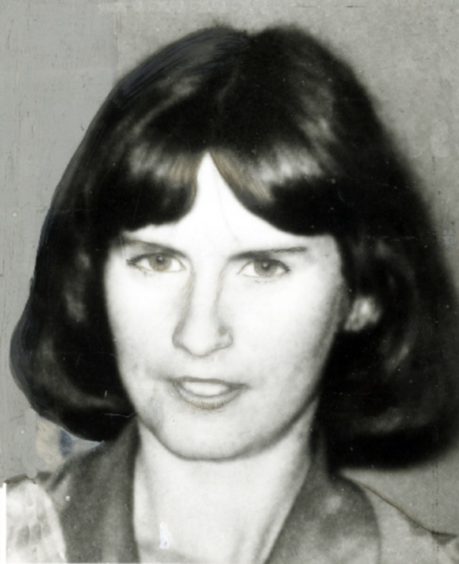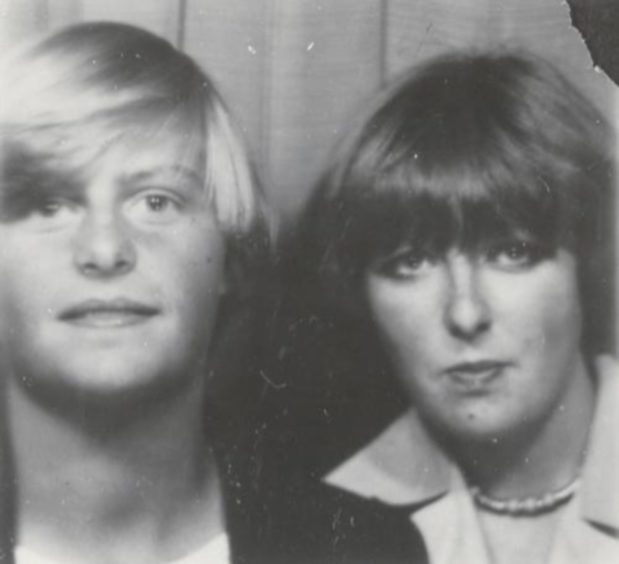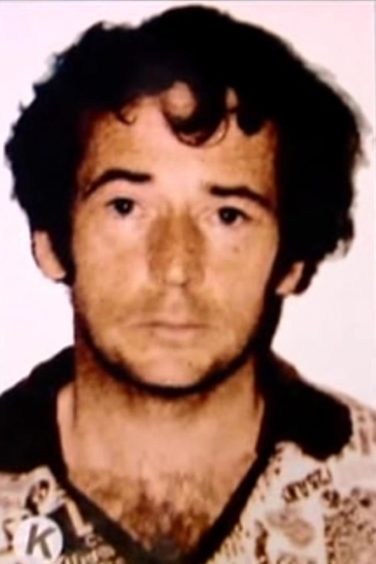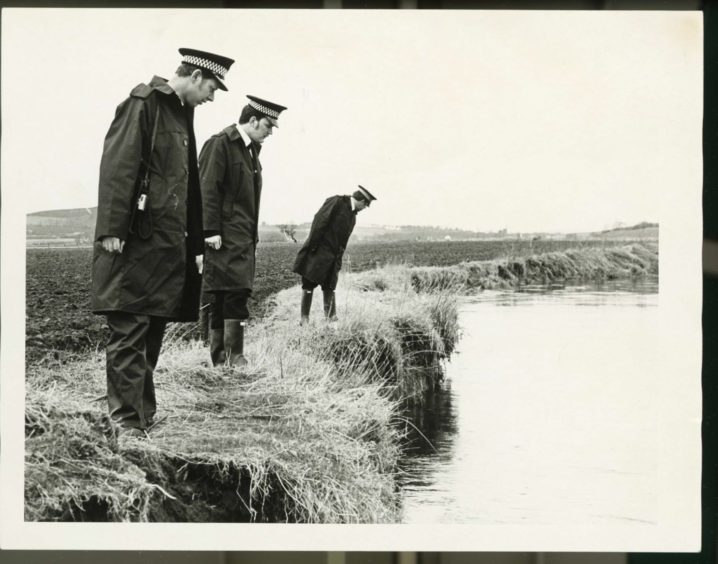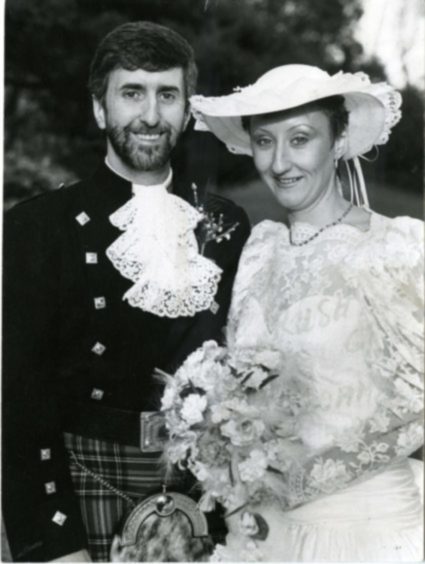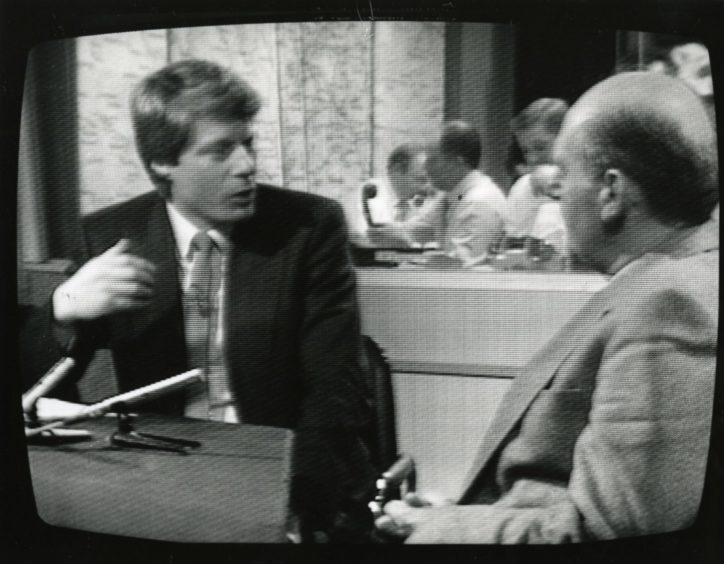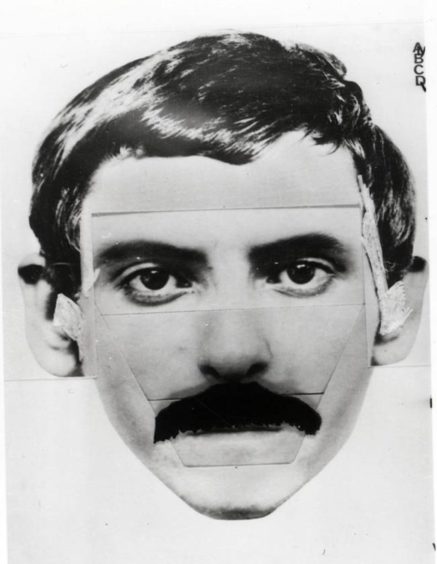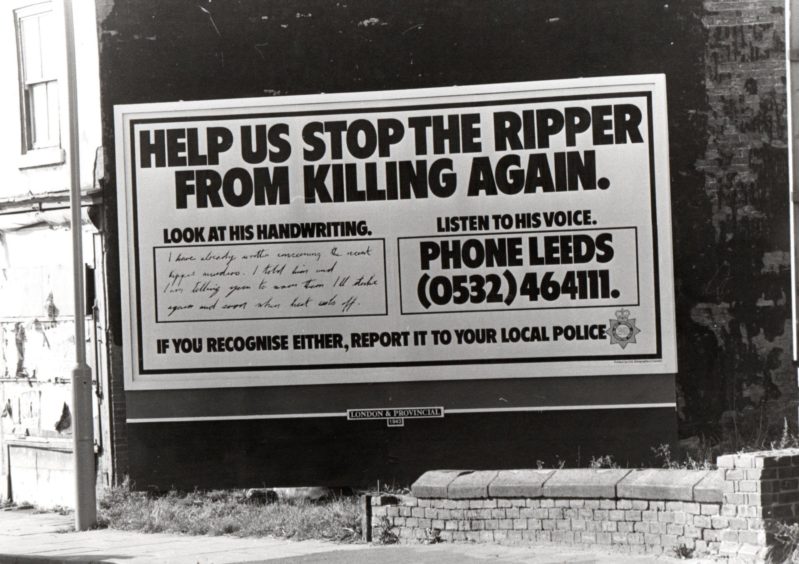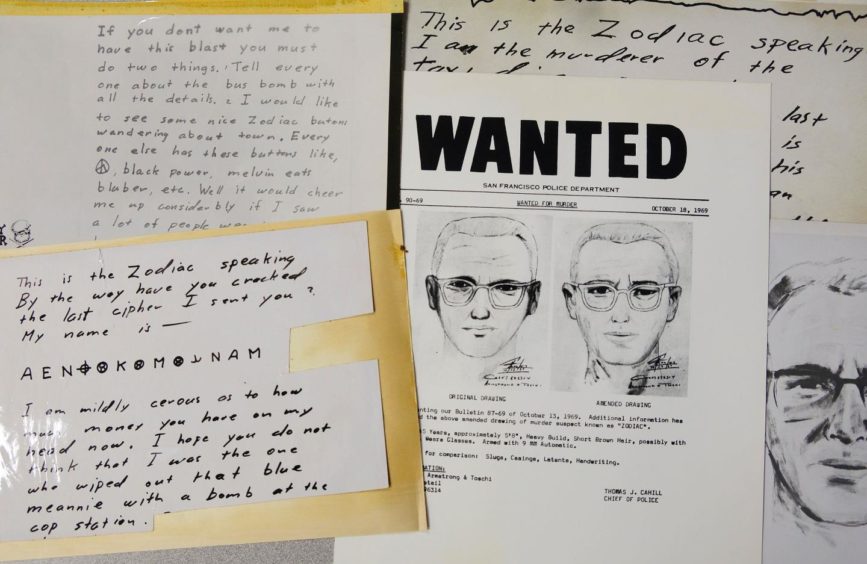Was the alcoholic brother-in-law of World’s End killer Angus Sinclair responsible for the Templeton Woods murders in Dundee?
Sinclair was convicted of four murders, with the most notorious being teenagers Helen Scott and Christine Eadie who were last seen at the World’s End pub on Edinburgh’s Royal Mile in October 1977.
Advances in forensic science along with a change in the law of double jeopardy, saw Sinclair, along with his brother-in-law Gordon Hamilton, found guilty of these crimes.
The pair had travelled from Glasgow to go fishing in East Lothian before visiting the World’s End pub.
Hamilton was Sinclair’s right-hand man.
But did he also murder Carol Lannen and Elizabeth McCabe?
The Templeton Woods murders in 1979 and 1980 have been thrust back into the spotlight in a new book about Sinclair’s unsolved crimes.
Were there more victims?
Former police detective Chris Clark and true crime podcaster Adam Lloyd believe there were many more victims; at least 12, and perhaps 14.
The body of 20-year-old Elizabeth McCabe was discovered in Templeton Woods on the outskirts of Dundee in 1980 – only 150 yards from where the corpse of Carol Lannen, 18, was found almost a year before.
The Dundee murders initially formed part of the Operation Trinity investigations that led to the conviction of Sinclair, along with Hamilton, for the World’s End murders.
Mr Clark said: “Elizabeth had been choked with her blue jumper – this is a method of murder which had strong similarities to another of the confirmed victims of Sinclair, Mary Gallagher, who at just 17 was murdered in Glasgow.
“Her handbag and shoes were later found thrown away some three miles away in Cobden Street, on the route to the River Tay and Tay Bridge.
“To me this would suggest that both women were murdered by the same man.
“There was DNA connective evidence to the second murder which was ruled as being unsafe due to its storage and handling.
“So in the absence of that we are left with a photofit of a suspect in the first murder.
“Taking the DNA evidence out, these crimes are indicative of the earlier 1970s murders committed by Angus Sinclair and Gordon Hamilton.
“As Sinclair was in prison at both material times, one has to consider where Hamilton was during these dates.”
Sinclair served six years for the rape and murder of seven-year-old Catherine Reehill in Glasgow in 1961 when he was 16.
He was jailed for life for a second time in 1982 for a series of rapes and sex attacks.
However, the true extent of his crimes only started to come to light in 2001, when he was convicted of the 1978 murder of Mary Gallagher in Glasgow.
These discoveries lead detectives to examine the link between Sinclair and several other unsolved cases.
Scientific advances put Sinclair and Hamilton − who died in 1996 − firmly in the frame for the World’s End pub murders of Helen Scott and Christine Eadie.
In 2007 Sinclair stood trial for these murders, but a lack of evidence saw the case collapse.
Sinclair died in prison in 2019
But following the change in Scotland’s double jeopardy law, Sinclair again faced trial for the World’s End murders in 2014, and this time was found guilty.
He was sentenced to a minimum of 37 years in prison for the murders of the two teenagers which ensured that Sinclair would die in jail.
Cold case expert Mr Clark and UK True Crime podcast host Mr Lloyd joined forces to work on the new book and have detailed the evidence against Sinclair.
Carol Lannen was found in Templeton Woods, which is close to Clatto Reservoir, a popular fishing venue which Sinclair would have known and visited.
Mr Lloyd said: “Carol’s handbag and clothing were recovered some 80 miles away washed up on the bank of the River Don near Kintore, a popular salmon and trout river.
“Again, an area known to Sinclair, who had worked in that area before.
“Sinclair told a prisoner at Peterhead that he was worried that he was going to be charged with the two murders.
“He was particularly concerned about the Carol Lannen case.
“Sinclair supposedly said that he hoped she wasn’t closely linked with him, especially as was doing a job in a motel in Aberdeen at the time.
“He went on to say: ‘I couldn’t have done the two of them’.
“That was a strange comment in itself, and made some insiders working on the investigation wonder if he had maybe killed just one of them.”
However, Sinclair couldn’t have killed Carol Lannen or Elizabeth McCabe, as he in jail at the time of their murders.
Dog lead killer another suspect?
Mr Lloyd said: “Perhaps a more compelling suspect was proposed by local reporter Sandy McGregor, who believes Carol was killed by Andrew Hunter, who was convicted of the murder of his pregnant wife Lynda in 1988 after the case was among the first Scottish cases featured on the BBC’s Crimewatch.
“Hunter moved to Dundee in 1977 to work for the Salvation Army and as an unqualified social worker working in a variety of children’s homes.
“Hunter was never interviewed over Miss Lannen’s murder and in October 1984, he met fellow social worker Lynda Cairns, who lived with a doctor in the house across the road.
“But he had a secret life, one in which he used the services of sex workers.
“There is a strong chance he may have met Carol Lannen in a children’s home in the city when she was in care and bought sex from her, and this could have led to him killing her.
“He was certainly capable of murder, being described in his trial as ‘an evil man of
exceptional depravity’ after he strangled his wife with her dog’s lead before burying the body in Ladybank, Fife, around 40 miles north-east of Edinburgh.”
The trial took place in July 1988 at the High Court in Dundee before Lord Brand and a jury of seven men and eight women.
The Crimewatch appeal had generated so much interest people jostled for seats in the public gallery.
A Dundee prostitute told the High Court that after a sex session with Hunter at his home, he told her his wife was dead.
Hunter died in Perth Prison
Hunter was found guilty of murdering his wife by a majority on August 2 1988 and was sentenced to life imprisonment.
Mr Lloyd said: “It is certainly true that a police photofit of the murder suspect in Carol’s case looks like Hunter.
“Even if he was seen as a genuine suspect, Hunter can no longer answer any of the questions as he died of a heart attack in Perth Prison, just six years after he murdered his wife.
“Just who did kill Carol and Elizabeth?
“Could it potentially have been Gordon Hamilton, Sinclair’s partner-in-crime?
“Was it a local man, as was always the view of detectives working on the original investigation?
“With the discovery of Carol’s purse in Kintore, was it someone from Aberdeenshire, or even further north in Scotland?
“Or were both killings unconnected, and it is purely a coincidence the bodies were left so close together, unlikely as this sounds?
“Unfortunately, with the passing of the years it seems as though the families of Carol Lannen and Elizabeth McCabe will never find out who murdered their daughters.”
The haunting similarities between the cases were not lost on uneasy Dundee residents who began to fear that the “disco killer” would strike again.
Many girls shunned the city’s nightspots in 1980.
Sixteen years after Miss McCabe’s murder, Tayside Police instructed a review of both deaths following the reopening of the Bible John case in Glasgow.
The murders were also included in a secret investigation into six possible Yorkshire Ripper attacks in Scotland by West Yorkshire Police Chief Constable Keith Hellawell.
Former Angus taxi driver Vincent Simpson was charged in 2005 with the murder of Miss McCabe after a review of the case.
Prosecutors claimed DNA evidence pointed to his guilt but his counsel said the police investigation was “fundamentally and permanently flawed”.
Zodiac Killer link to Lannen
A jury at the High Court in Edinburgh took only three hours to acquit him in 2007.
The man responsible for the infamous Zodiac slayings which terrorised Northern California from 1968-74 was also linked to the murder of Miss Lannen after a dossier of evidence was given to Tayside Police in 2005.
The dossier stated the killer had fled to Scotland and said the “Zodiac’s last act” was the murder of Miss Lannen but the theory was eventually quashed by investigators in California.
Gone Fishing: The Unsolved Crimes of Angus Sinclair is now available to pre-order from Mango Books.
